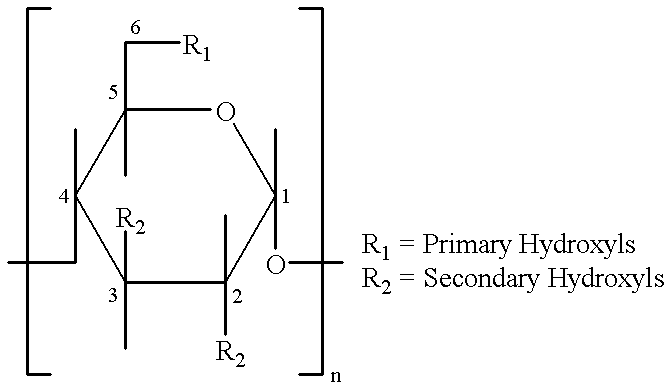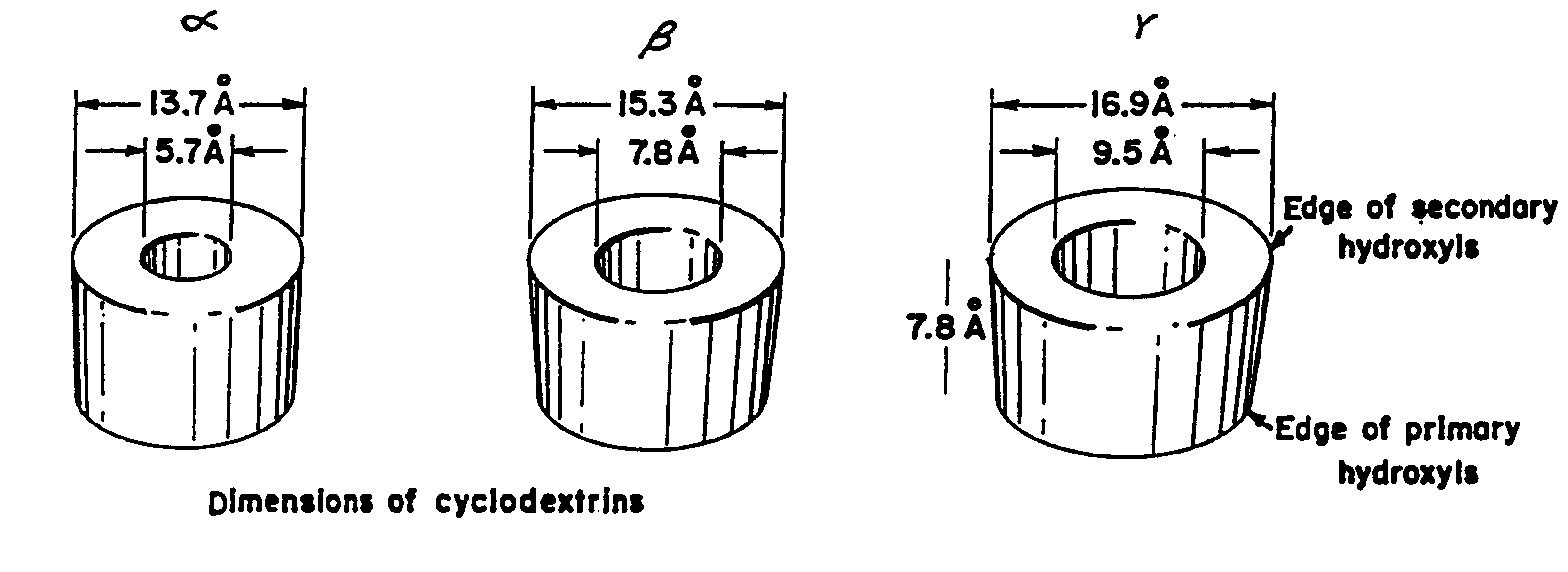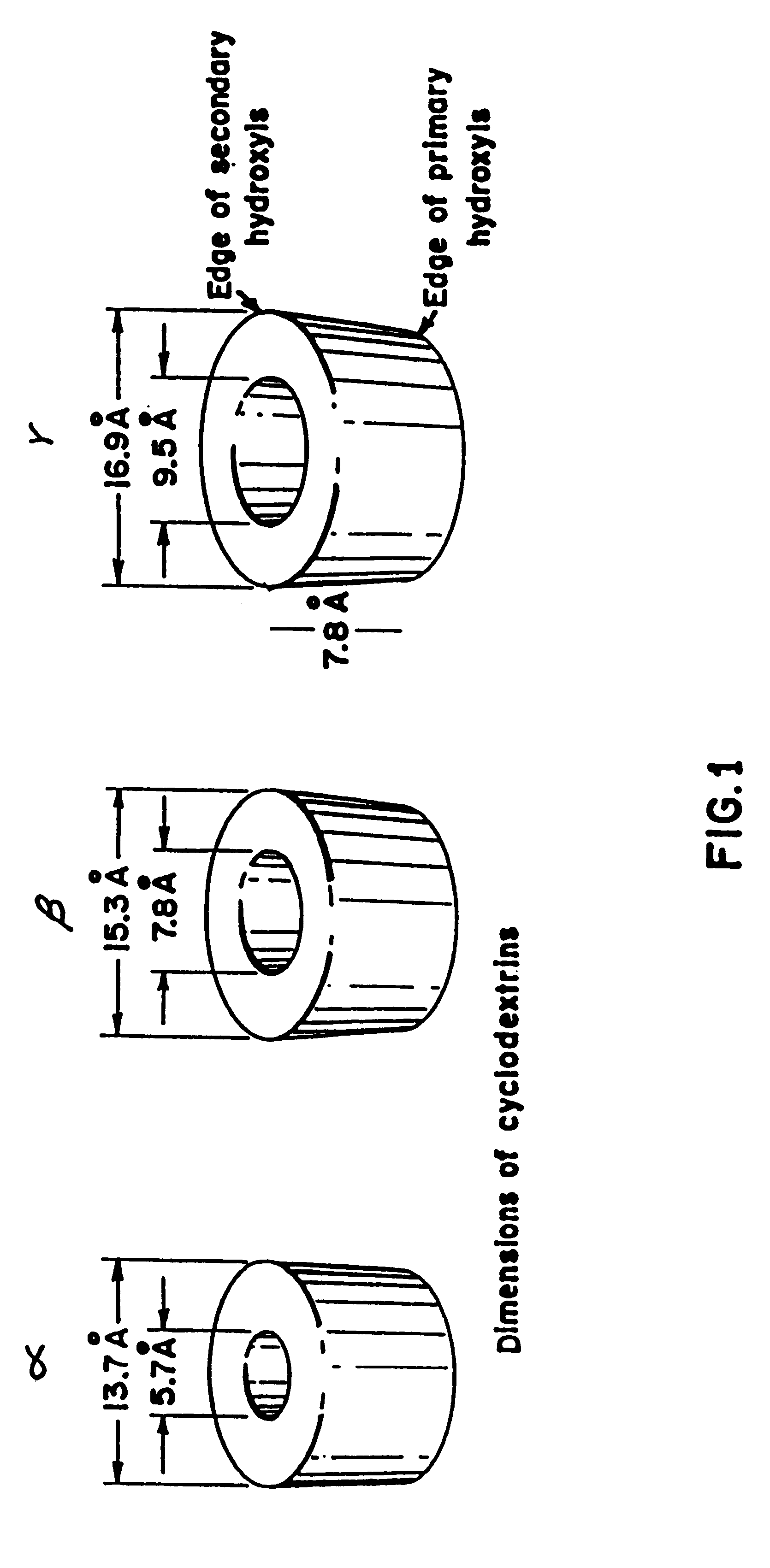Barrier material comprising a thermoplastic and a compatible cyclodextrin derivative
a cyclodextrin derivative and thermoplastic technology, applied in the direction of rigid containers, synthetic resin layered products, packaging, etc., can solve the problems of cyclodextrin ability, complex manufacturing, contaminating food or other packaged items, etc., to improve product quality and safety, and increase diffusion rate
- Summary
- Abstract
- Description
- Claims
- Application Information
AI Technical Summary
Benefits of technology
Problems solved by technology
Method used
Image
Examples
example ii
Trimethyl Silyl Ether of .beta.-cyclodextrin
Into a rotary evaporator equipped with a 4000 milliliter round bottom flask and a nitrogen atmosphere, introduced at a rate of 100 milliliters N.sub.2 per minute, was placed three liters of dimethylformamide. Into the dimethylformamide was placed 750 grams of .beta.-cyclodextrin. The .beta.-cyclodextrin was rotated and dissolved in dimethylformamide at 60.degree. C. After dissolution, the flask was removed from the rotary evaporator and the contents were cooled to approximately 18.degree. C. Into the flask, placed on a magnetic stirrer and equipped with a stir bar, was added 295 milliliters of hexamethyldisilylazine (HMDS-Pierce Chemical No. 84769), followed by the careful addition of 97 milliliters of trimethylchlorosilane (TMCS-Pierce Chemical No. 88531). The careful addition was achieved by a careful dropwise addition of an initial charge of 20 milliliters and after reaction. subsides the careful dropwise addition of a subsequent 20 mil...
example iii
An hydroxypropyl .beta.-cyclodextrin was obtained with 1.5 hydroxypropyl groups per molecule on the primary 6-OH group of the .beta.CD.
example iv
An hydroxyethyl .beta.-cyclodextrin was obtained with 1.5 hydroxyethyl groups per molecule on the primary 6-OH group of the .beta.CD.
Preparation of Films
We prepared a series of films using a linear low density polyethylene resin, .beta.CD and derivatized .beta.CD such as the acetylated or the trimethylsilyl derivative of a .beta.-cyclodextrin. The polymer particles were dry blended with the powdered .beta.-cyclodextrin and .beta.-cyclodextrin derivative material, a fluoropolymer lubricant (3M) and the antioxidant until uniform in the dry blend. The dry blend material was mixed and extruded in a pellet form in a Haake System 90, 3 / 4" conical extruder. The resulting pellets were collected for film preparation.
Table IA displays typical pelletizina extruder conditions. The films were blown in the apparatus of FIG. 2. FIG. 2 shows extruded thermoplastic tube 21 exiting the die 22. The tube is collapsed by die 23 and layered by rollers 24 into the film 25. The extruded tube 21 is inflated...
PUM
| Property | Measurement | Unit |
|---|---|---|
| thick | aaaaa | aaaaa |
| thick | aaaaa | aaaaa |
| thickness | aaaaa | aaaaa |
Abstract
Description
Claims
Application Information
 Login to View More
Login to View More - R&D
- Intellectual Property
- Life Sciences
- Materials
- Tech Scout
- Unparalleled Data Quality
- Higher Quality Content
- 60% Fewer Hallucinations
Browse by: Latest US Patents, China's latest patents, Technical Efficacy Thesaurus, Application Domain, Technology Topic, Popular Technical Reports.
© 2025 PatSnap. All rights reserved.Legal|Privacy policy|Modern Slavery Act Transparency Statement|Sitemap|About US| Contact US: help@patsnap.com



